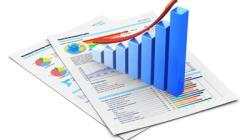We live in a modern, technological world where data, or more accurately insights from data, can drive competitive advantage. From identifying opportunities for optimisation and efficiency to generating a greater understanding of customers and prospects, it should be every company's aim to use their data to influence their decisions and future strategies to gain the advantage in their competitive market.
Machines thinking on their own present a number of anxieties in the workplace. Perhaps the most significant anxiety is the loss of work. Loss of work within factories is more than an anxiety, it is a reality.
Businesses have long recognised the importance of using data analytics to improve the customer experience. The focus on customer-orientated analytics has, however, resulted in businesses failing to harness the power of their data to optimise their operational processes and significantly improve margins – although this is changing.
Analytics runs all business, yet it’s so often obfuscated. To make it real is a journey of discovery – first, establish a hypothesis, second, build an understandable context and third, act after you have continued to question the problem to conclusion. It’s a Tsunami! Data is estimated to be doubling in size every 2 years.
It goes without saying that every successful business needs to be in full control of their finances - both income and expenses. To thrive in the current economic climate, businesses must make effective use of all the data their business produces.
‘Business Analytics’ is often portrayed as the latest miracle cure for managers wanting to improve corporate performance. But like most IT-based capabilities, the hype is often in the realms of fantasy, which can never be realised. However, analytics is a capability that can bring tremendous value to those organisations who understand how and when it can be applied.
Pagination
Subscribe to
FP&A Trends Digest

We will regularly update you on the latest trends and developments in FP&A. Take the opportunity to have articles written by finance thought leaders delivered directly to your inbox; watch compelling webinars; connect with like-minded professionals; and become a part of our global community.






